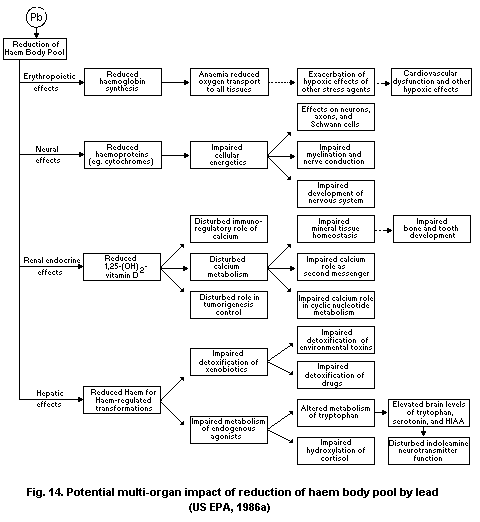Lead poisoning reduces haeme synthesis

In addition to ALAD genotype, other factors to consider in determining overall susceptibility to lead toxicity include substances that inhibit the ALAD enzyme and nutritional status, primarily calcium and iron intake. The interaction between these factors and ALAD may be important when considering the health effects of lead. Additionally, the genes encoding the vitamin D receptor (VDR) and the hemochromotosis-MHC Class I protein (HFE), are both polymorphic and have been recently implicated in lead poisoning susceptibility. Thus, gene-environment and gene-gene interactions may produce enhanced effects and deserve further exploration
Ref
Targets of lead toxicity